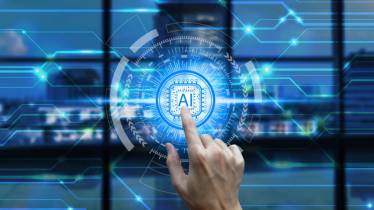India’s global capability centre (GCC) ecosystem is set to enter a structural reset as artificial intelligence (AI) shifts centres from back-office engines to product-led, governance-driven innovation hubs, a recent report by NLB Services, a tech-focused hiring firm, said.
AI adoption by GCCs in India is expected to expand the workforce by 11% in the next 12 months to reach 2.4 million, with a further 1.3 million jobs projected by 2030 as AI-native roles scale across engineering, operations and governance.
The report said six in 10 GCCs (58%) have already moved beyond the pilot phase of AI deployment, with 31% scaling AI across verticals and 13% embedding it in enterprise workflows. This shift is prompting companies to deepen capability-building and bring critical skills in-house. “The need for good talent for the emerging skills will continue to be there,” Varun Sachdeva, SVP and head – APAC, NLB Services, said. He added that India is positioning itself as the world’s second largest AI talent hub after the US. The country now has around 600,000 AI professionals, projected to reach 1.25 million by 2027 , forming 16 % of global AI talent.
Rising wage inflation in AI and digital roles (25%) and attrition at 26% are adding urgency to these capability investments. GCCs are expanding internal learning academies, building curriculum partnerships and reworking workforce structures to reduce dependency on external talent pools. “With the growth of GCCs and the new-age technologies like artificial intelligence, machine learning and data analytics capabilities, there will be some sort of a war for talent, and with all the growth on the GCC side, it will intensify,” Sachdeva said.
New AI-Native Workforce
The report shows that AI is also reshaping workforce architecture, with emerging roles such as AI governance architects (29%), prompt engineers (26%) and GenAI product owners (22%) gaining prominence as automation accelerates. These shifts are concentrated in mid-level technical layers, which the report identifies as the first to undergo redesign as enterprises embed AI deeper into operations.
At the same time, shortages are widening in leadership pipelines and AI-native roles, with the steepest gaps appearing in core operations (13%) and senior leadership (11%). The report said GCCs are responding by building multi-disciplinary fusion teams and strengthening role-specific reskilling journeys, which nearly one in five centres (18%) have already adopted. Attrition and wage inflation continue to add pressure, particularly in AI-heavy functions where demand outstrips supply.
Decentralisation and Strategic Focus
The report also highlights a structural shift in operating models as GCCs transition from volume-driven roles to AI-enabled productivity. Legacy functions such as L1 IT support (75%) and legacy application development (74%) are declining sharply as centres migrate to cloud-native and AI-engineered delivery. At the same time, decentralisation is accelerating, with nearly two out of five GCC employees (39%) expected to be based in Tier-2 and Tier-3 cities by 2030, driven by lower costs and expanding talent pools. Investment priorities are also evolving, with GenAI skill-building (32%), AI-augmented operations (28%) and Responsible AI frameworks (22%) emerging as the top focus areas for 2025.
